Research
Recent Research News
Outstanding Graduate Student Awardees

Cailin Casey (left) received the 2024 M&IE Outstanding Graduate Teaching & Outreach Award. Ghazal Vahidi (middle) and Brendan Christensen (right) received the 2024 M&IE Outstanding Graduate Research Award. More information.
Research Interests
Our department's research focus areas and strengths include:
- Materials and Structures: Ceramics, Composites, MEMS
- Experimental and Computational Fluid Dynamics
- Energy Systems: Fuels Cell, HVAC, Renewable Energy
- Biomechanics
- Design and Manufacturing
- Human Factors, Service Engineering
- Health and safety in communities and workplaces
For more details, check out this listing of faculty research interests:
For the most up to date list, see the research interests listed in the department faculty directory.
Kevin Amende
Integrated building design, performance testing of heating and cooling equipment,
building control systems, engineering education
Roberta Amendola
Oxidation and corrosion of metallic alloys, high temperature protective coating development
and high temperature corrosive gases and water vapor interactions with metals and
ceramics
Ruhul Amin
Computational heat transfer and fluid flow
Dilpreet Bajwa
Biopolymers, Fiber Composites, Nanocellulosic Materials, Durability
Doug Cairns
Advanced materials as applied to primary structure and understanding the materials,
manufacturing, and structural performance link for new engineering systems
Yang Cao
Advanced manufacturing, Additive manufacturing, Microfabrication, Flexible electronics,
Smart manufacturing
Sarah Codd
NMR/MRI technique development, spatially resolved studies of gas in ceramics, flow
and diffusion studies in porous media, and investigation of fluid dynamics in hydrogels,
biofilms, cellular suspensions and polymer electrolyte membranes
Kevin Cook
Development of new lab equipment and learning procedures, development of interactive learning techniques for students
Lewis Cox
Polymer Science, Scanning Probe Microscopy, Additive Manufacturing, Stimuli Responsive
Polymers, Photopolymerization, Surface Engineering
Faraz Dadgostari
Socio-Economic & Human-AI Systems; Adaptive Decision Making Under Uncertainty; Management
Information Systems; Multi-Agent Network System, Network Optimization; (Inverse) Reinforcement
Learning; Game Theory & Market Design
Chelsea Heveran
Skeletal effects of aging and disease, hierarchical natural composites, data-driven
materials design, biomimetic materials design
Mark Jankauski
Mathematical modeling and experimental studies of complex biological systems. Develop
an understanding of fundamental biological mechanisms in order to improve bio-inspired
technologies.
Erick Johnson
Fluids, Numerical Models, Energy & Environment, Biofilms, Acoustics
Ron June
Novel treatment strategies for osteoarthritis. Current programs involve (1) understanding
how chondrocytes and all cells respond to mechanical loads, (2) using systems biology
and metabolomics to understand regulation of central metabolism, and (3) expanding
our understanding of osteoarthritis.
Sage Kittelman
System Sciences, General Systems Thinking, Communication
Yaofa Li
Experimental studies of thermal-fluid problems primarily at microscopic scales with
broad applications in thermal sciences, energy, water, and the environment.
Frank Marchak
Cognitive psychophysiology, memory, vision, credibility assessment, human factors
& ergonomics
Bernadette McCrory
Industrial engineering, biomedical engineering, healthcare engineering, human factors/ergonomics,
biomechanics, user experience, universal design, medical device design, applied statistics
David Miller
Composite materials, experimental mechanics, mechanical system design, active materials
and structures
Scott Monfort
Musculoskeletal biomechanics, postural and gait stability, neurological influence
on human movement, sport injury prevention, and fall prevention
Sarah Morris
Experimental Fluid Dynamics
Mark Owkes
Computational fluid dynamics, multiphase flows, fuel injection, atomization, uncertainty
quantification, physics extraction techniques
Corey Pew
Biomechanics and human-machine interactions with applications to the advancement of
lower limb amputee technologies
Cecily Ryan
Biodegradable and bio-derived polymers and composites, materials properties of composites
(including interfacial compatibilization), sustainable material and energy product
lifecycles, incorporation/reuse of waste materials, environment-material interaction,
multi-functional materials, nanocomposites
Perrin Schiebel
Animal biomechanics, Bio-inspired robotics, Locomotion in complex terrain
Stephen Sofie
Advanced Ceramics, Ceramic Processing, Engineered Porosity, Nano-materials, Catalysts,
Amorphous Alloys
Stephan Warnat
MEMS, Environmental science, Sensors and actuators
Ali Yalcin
Data Analytics, Ambient Intelligence, Internet of Things, Time-series Data Mining
and Analytics Applications in Healthcare
Research Entities
These facilities and entities are listed because they are housed in our department or have a strong affiliation, but our research is interdisciplinary and often involves other research entities in the college as well as other user facilities at MSU.
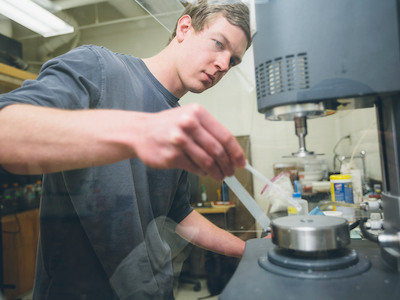
Magnetic Resonance Imaging (MRI) is a noninvasive imaging technology that has found broad application in clinical medicine and is a maturing method for studies in engineering and physics. The lab offers a variety of tools for researching biofilms, gels, ice and more.
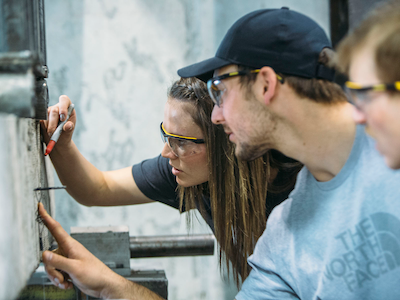
Established in 2016, the Montana Engineering Education Research Center (MEERC) seeks to position Montana as a national leader in engineering education research andtransform engineering education through collaborative, empirical research.
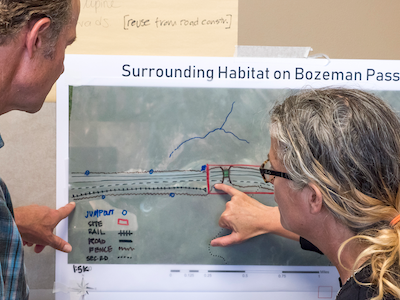
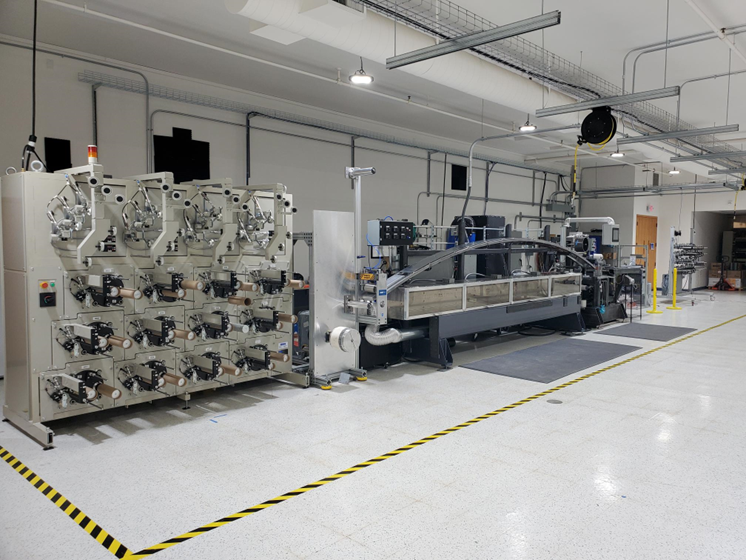
Stretch Carbon Fiber Pilot Plant
The Stretch Broken Carbon Fiber for Primary Aircraft Structures is a $40M program sponsored by the US Army Combat Capabilities Command Aviation and Missile Center. An overview of this contract can be found here: Stretch Broken Carbon Fiber for Primary Aircraft Structures Overview Presentation As part of that program, MSU has developed a Pilot Plant to make materials for university and industry composite structure development programs. The pilot plant is vertically integrated, and only requires incoming feedstock in the form of polymeric resins and carbon fibers. The Stretch Broken Carbon Fiber Pilot is a demonstrator for production scale technology transfer of this disruptive technology, which promises to revolutionize fiber-reinforced composite materials and manufacturing.
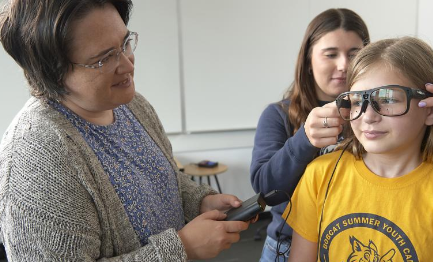
Biomedical Innovation for Research and Development Hub (BioReD)
The BioReD Hub’s vision is as a translatable research interface between the brain (neurobiology), cognition (neuroscience) and human behavior (human factors engineering). This interprofessional Hub of researchers from the Norm Asbjornson College of Engineering, Mark & Robyn Jones College of Nursing, Gianforte School of Computing, and many others use state-of-the-art instrumentation, research practices and innovative ideas to address biomedical systems engineering design, healthcare system improvement, and clinical practice advancement.
Other Facilities
- 3D Printers Lab
- Computer Aided Design and Drafting (CADD) Laboratory
- Computer Integrated Manufacturing (CIM) Laboratory
- Decision Support Systems (DSS) Laboratory
- Machining (Manufacturing & Welding) Laboratory
- Measurements and Instrumentation Laboratory
- Mechanical Design Laboratory
- Ragsdale Production Systems and Facilities Design Laboratory
- Work Design (Ergonomics and Human Factors) Laboratory
Research Opportunities
It is our intention to support all qualified doctoral students with either RA or TA positions (subject to availability of funding).
- Available to undergraduates at MSU and other schools.
- Students gain hands-on research experience working with a faculty adviser.
- Provides residence hall lodging, reimbursement for travel to/from Bozeman, and $5,000 stipend.
- Runs June through August.
- Application deadline is generally in February.
Undergraduate Research is a great way to get some experience outside of classes and can be useful when you
apply to either jobs or graduate school.
Getting involved with research is a very individual process. But, most students start
by looking at faculty websites and looking for projects that interest them, areas
they want to focus on, or simply faculty they enjoy working with. Once you identify
a few faculty, you should contact them about potential opportunities. Write a professional
email explaining why you are interested in working with the faculty member, a bit
about your strengths and why you think they align with research, your timeline for
graduating, and current post-graduation plans. If faculty do not get back to you,
do not get discouraged, try going to the faculties office during office hours. There
is no best time during the year to contact faculty. Projects start and stop all the
time.
Depending on the project and your commitment level, there may be funding available.
Here are some programs that provide funding for undergraduate research
Undergraduate Scholars Program (USP)
The Undergraduate Scholars Program (USP) is one of the largest multidisciplinary undergraduate research programs at MSU. We are here to help undergraduate students in all disciplines pursue research, scholarship, and creative projects.
INBRE Program for Biomedical Research
INBRE grants are designed to enhance biomedical research capacity, expand and strengthen the research capabilities of biomedical faculty and provide access to biomedical resources for promising undergraduate and graduate students throughout eligible states.
The McNair Scholars Program at Montana State University-Bozeman is one of the premier and nationally recognized undergraduate programs on campus. The essence of our program is to successfully combine faculty mentoring, undergraduate research, and academic support services for students whose families have not traditionally participated in post-secondary education. Specifically, those students who are the first in their families to attend college and are from low-income families OR are members of ethnic/racial underrepresented minorities.
First Year Research Experience (FYRE)
FYRE is an innovative new program designed to connect first-year students with hands-on research experiences in a variety of academic disciplines.
Leadership Alliance programs foster intellectual and professional growth along every stage of the academic and career path.
Leadership Alliance Summer Research Program
Summer Research - Early Identification Program (SR-EIP) is a fully paid summer internship that provides undergraduates with training and mentoring in the principles underlying the conduct of research and prepares them to pursue competitive applications to PhD or MD-PhD programs.
For general questions and more information about research opportunities in our department, contact us at mieresearch@montana.edu. The engineering college's research resources webpage also provides an overview of research opportunities for faculty and students.
More Research News
